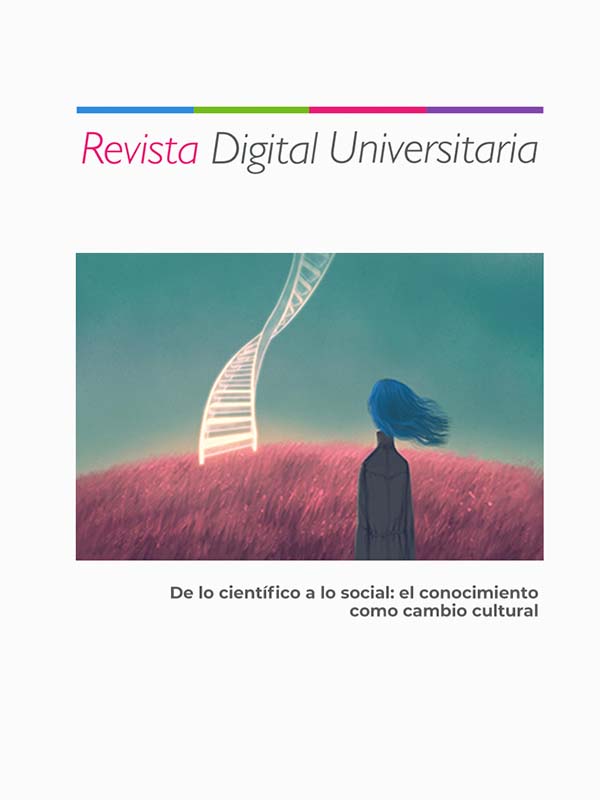Orchid Germination: The Key Lies in Fungal Partnerships
DOI:
https://doi.org/10.22201/ceide.16076079e.2025.26.1.7Keywords:
symbiosis, orchid mycorrhiza, germination, conservation, fungiAbstract
Orchids are captivating plants, both for their beauty and diversity. With approximately 30,000 to 35,000 species distributed globally, these plants are known for their delicacy and specific growth requirements. One of the keys to their reproduction is the symbiosis with microscopic fungi, which play a crucial role in the germination of their seeds. This symbiotic process benefits not only the orchid but also the fungus and has become a fundamental tool for the conservation and cultivation of orchids. In this article, we explore how symbiotic germination takes place, the benefits of this relationship, and its potential to improve conservation and propagation strategies for these fascinating plants.
References
Beltrán-Nambo, M. de los A., Martínez-Trujillo, M., Montero-Castro, J. C., Salgado-Garciglia, R., Otero-Ospina, J. T., y Carreón-Abud, Y. (2018). Fungal diversity in the roots of four epiphytic orchids endemic to Southwest Mexico is related to the breadth of plant distribution. Rhizosphere, 7, 49–56. https://doi.org/10.1016/j.rhisph.2018.07.001
Bougoure, J. J., Brundrett, M. C., y Grierson, P. F. (2010). Carbon and nitrogen supply to the underground orchid, Rhizanthella gardneri. New Phytologist, 186(4), 947–956. https://doi.org/10.1111/j.1469-8137.2010.03246.x
Carrera-Castaño, G., Calleja-Cabrera, J., Pernas, M., Gómez, L., y Oñate-Sánchez, L. (2020). An updated overview on the regulation of seed germination. Plants, 9(6), 703. https://doi.org/10.3390/plants9060703
Debouck, D., Ebert, A., Peralta, E., Barandiarán, M. A., y Ramírez, M. (2008). La importancia de la utilización de la diversidad genética vegetal en los programas de investigación en América Latina. Recursos Naturales y Ambiente, 53, 46–53. https://doi.org/http://repositorio.iniap.gob.ec/handle/41000/2760
Montes, N. (2016). Especificidad potencial de hongos micorrícicos en el proceso de germinación y supervivencia in vitro de orquídeas terrestres [Tesis de maestría, Universidad Michoacana de San Nicolás de Hidalgo].
Navarro, A. (2021). Aislamiento e identificación de hongos micorrizógenos promotores de germinación y desarrollo inicial de Epidendrum radicans Pav. ex Lindl. [Tesis de licenciatura, Universidad Michoacana de San Nicolás de Hidalgo].
Salmeron-Santiago, I. A., Martínez-Trujillo, M., Valdez-Alarcón, J. J., Pedraza-Santos, M. E., Santoyo, G., Pozo, M. J., y Chávez-Bárcenas, A. T. (2022). An updated review on the modulation of carbon partitioning and allocation in arbuscular mycorrhizal plants. Microorganisms, 10(1), 1–20. https://doi.org/10.3390/microorganisms10010075
Sathiyadash, K., Muthukumar, T., Karthikeyan, V., y Rajendran, K. (2020). Orchid mycorrhizal fungi: Structure, function, and diversity. In Orchid Biology: Recent Trends & Challenges (pp. 239–280). Springer Singapore. https://doi.org/10.1007/978-981-32-9456-1_13
Smith, S., y Read, D. (2008). Mycorrhizal Symbiosis (3.ª ed.). Academic Press. https://doi.org/10.1016/B978-0-12-370526-6.X5001-6
Tejeda-Sartorius, O., Téllez-Velasco, M. A., y Escobar-Aguayo, J. (2017). Estado de conservación de orquídeas silvestres (Orchidaceae). Agroproductividad, 10(6), 3–12. https://www.revista-agroproductividad.org/index.php/agroproductividad/article/view/1031
Yeung, E. C. (2017). A perspective on orchid seed and protocorm development. Botanical Studies, 58(1), 33. https://doi.org/10.1186/s40529-017-0188-4
Published
Issue
Section
License
Copyright (c) 2025 Revista Digital Universitaria

This work is licensed under a Creative Commons Attribution-NonCommercial-ShareAlike 4.0 International License.

Revista Digital Universitaria es editada por la Universidad Nacional Autónoma de México se distribuye bajo una Licencia Creative Commons Atribución-NoComercial 4.0 Internacional. Basada en una obra en http://revista.unam.mx/.










